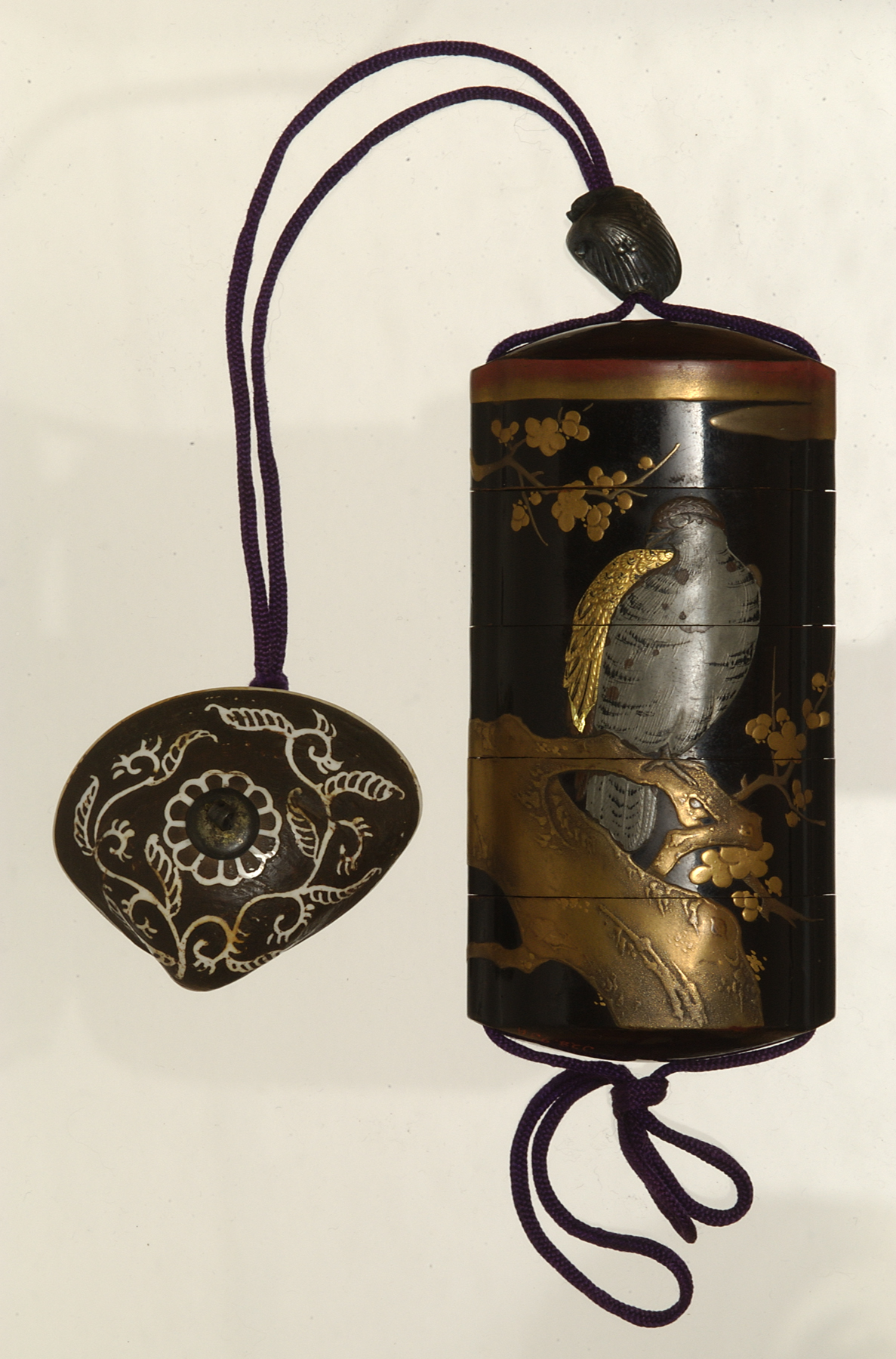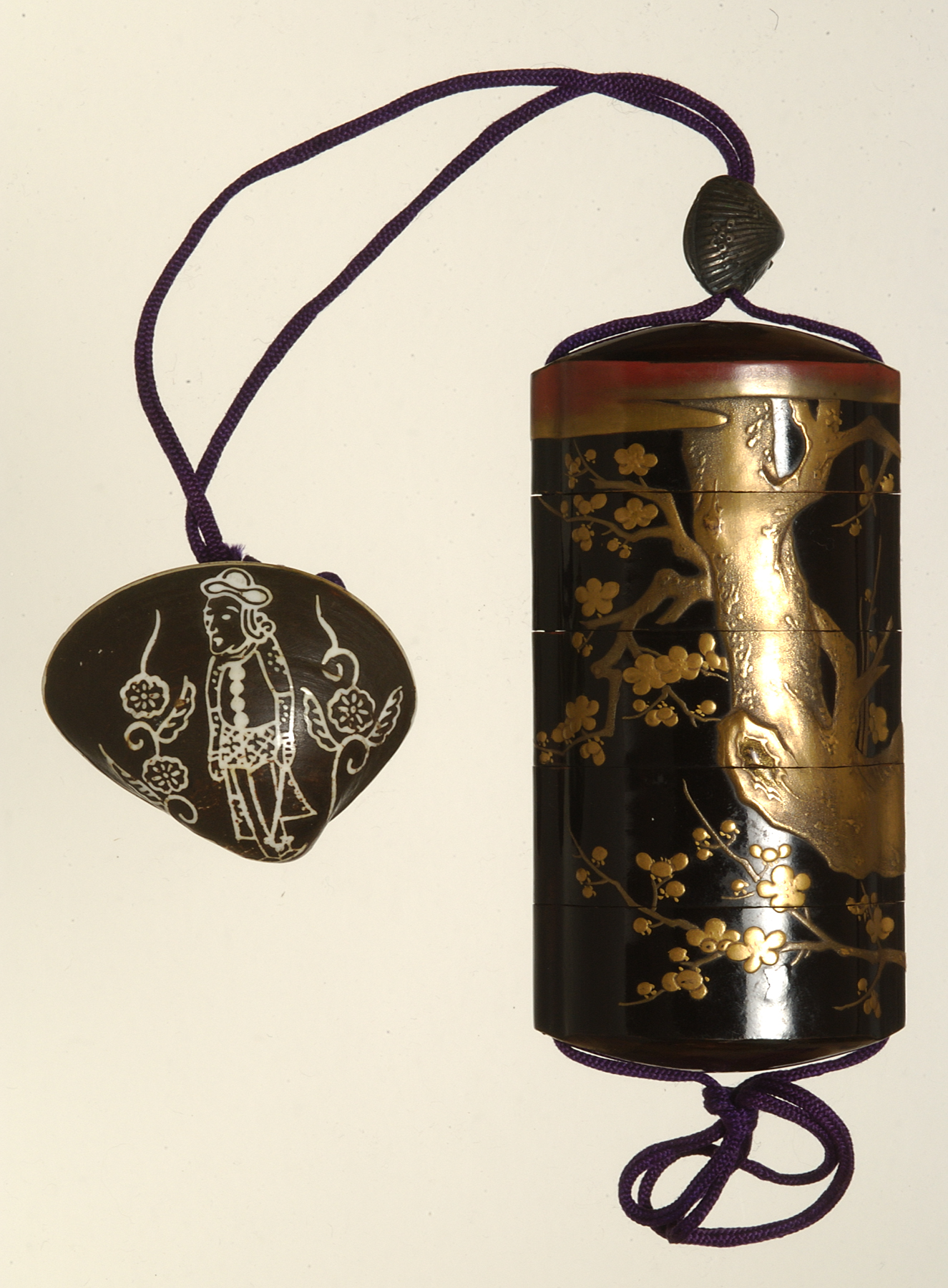inro, netsuke, ojime, unknown maker from Japan
Artwork Overview

inro, netsuke, ojime
, Edo period (1600–1868)
Where object was made: Japan
Material/technique: lacquer; clam shell; metal; takamaki-e; ivory inlay
Dimensions:
Object Height/Width/Length (Height x Width x Length): 9 x 2.5 x 4.5 cm
Object Height/Width/Length (Height x Width x Length): 3.7 x 2.8 x 4.6 cm
Object Height/Width/Length (Height x Width x Length): 9 x 2.5 x 4.5 cm
Object Height/Width/Length (Height x Width x Length): 3.7 x 2.8 x 4.6 cm
Credit line: William Bridges Thayer Memorial
Accession number: 1928.0093.a,b,c
Not on display
If you wish to reproduce this image, please submit an image request


